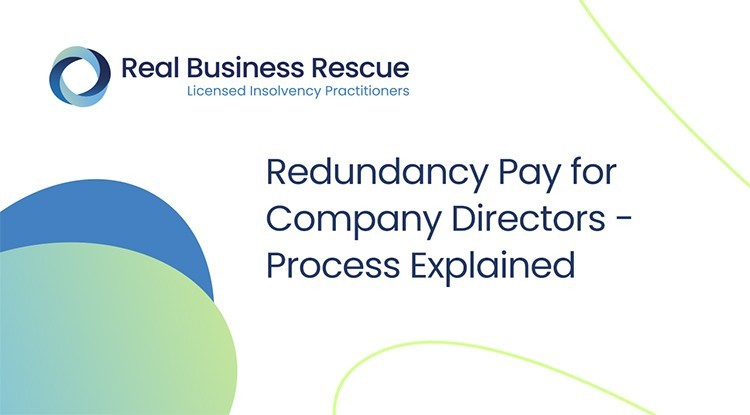Discussed: If a Company Goes Bust Who Pays Redundancy in the UK?
Discussed: If a Company Goes Bust Who Pays Redundancy in the UK?
Blog Article
Exploring the Operational Characteristics of Business Redundancy and Its Long-Term Sustainability

Redundancy Methods for Organization Continuity
In order to guarantee nonstop procedures, companies must apply reliable redundancy approaches for organization connection. Redundancy in this context describes the duplication of essential components or functions within a system to reduce the influence of prospective failures. By including redundancy techniques, organizations can enhance their durability against disruptions triggered by different aspects such as natural catastrophes, tools failures, or cyber-attacks.
One common redundancy approach is the implementation of back-up systems and information storage remedies. This involves producing matches of vital information and systems that can be turned on in instance of a primary system failing. Furthermore, companies can establish repetitive interaction channels and source of power to keep connection and procedures throughout unpredicted events.
Additionally, cross-training employees to carry out several functions within the firm can offer as a beneficial redundancy method. If essential employees are unavailable due to ailment or various other factors, this makes sure that crucial jobs can still be brought out even. Overall, efficient redundancy methods are necessary for companies to support operational continuity and minimize the influence of potential disruptions.
Impact of Redundancy on Organizational Durability
Provided the essential duty redundancy techniques play in guaranteeing business connection, exploring the influence of redundancy on business resilience ends up being imperative for recognizing the holistic operational dynamics of a firm. Organizational durability describes an entity's capacity to adjust to disturbances, recover from problems, and change when essential while maintaining core functions. Redundancy, when strategically executed, can substantially contribute to improving a company's resilience despite unexpected obstacles. By having backup systems, workers, or procedures in location, business can better stand up to shocks and continue procedures with very little disruption.
Furthermore, redundancy can cultivate advancement and creative thinking within a company as workers feel encouraged to take computed risks, recognizing that there is a safety web to support them in situation of failure. On the whole, the impact of redundancy on business resilience is extensive, forming the long-term sustainability and success of a company.
Balancing Efficiency and Flexibility in Redundancy
Achieving an unified stability between functional effectiveness and flexible adaptability is a crucial obstacle in the tactical implementation of redundancy within companies. Effective operations are necessary for maintaining performance and cost-effectiveness, ensuring that resources are used ideally. However, too much focus on effectiveness alone can bring about strength, making it tough for companies to adapt to unforeseen modifications or challenges. On the various other hand, flexibility permits organizations to react nimbly to progressing scenarios, cultivating innovation and strength. Yet, excessive adaptability without a solid operational foundation can result in inefficiencies and disparity.
To stabilize effectiveness and adaptability in redundancy preparation, organizations have to thoroughly analyze their operational needs, market dynamics, and strategic objectives. Inevitably, locating the best balance in between effectiveness and adaptability is important for building a durable and sustainable organization in the face find out here now of unpredictability.
Long-Term Sustainability With Redundancy Preparation
To ensure long-lasting stability and stability, organizations need to tactically align their redundancy planning with long-term sustainability objectives, consequently balancing operational effectiveness with adaptive adaptability. Lasting sustainability through redundancy preparation entails even more than just temporary cost-cutting procedures. It calls for a thorough tactical strategy that anticipates future obstacles and possibilities. Companies need to view redundancy not as a responsive solution to instant issues but as a proactive approach for lasting success. By integrating redundancy preparation with sustainability goals, companies can produce a redirected here durable structure that can endure numerous market changes and interior changes.

Proactive Steps for Sustainable Firm Operations
Exactly how can business proactively improve their operational sustainability for long-lasting success? Carrying out proactive actions is important for companies aiming to ensure sustainable operations. One key method is to spend in technology and development to streamline processes, decrease waste, and stay competitive in the market. Embracing sustainable techniques such as reducing power consumption, lessening carbon impact, and enhancing resource application can not only profit the setting yet additionally cause set you go to these guys back savings in the future.
Furthermore, fostering a society of constant enhancement and knowing within the company can improve adaptability to changing market problems and customer needs. Encouraging staff member involvement in decision-making processes and giving opportunities for professional development can improve morale, performance, and overall efficiency. Developing clear goals, keeping an eye on essential performance indications, and routinely assessing progression are vital parts of proactive sustainability monitoring.
Working together with distributors, customers, and various other stakeholders to promote lasting practices throughout the supply chain can produce a causal sequence of favorable influence - redundancy pay if company goes bust. By taking proactive steps towards operational sustainability, firms can build resilience, drive advancement, and secure their long-term success in an ever-evolving company landscape
Conclusion

In the world of organizational management, the tactical release of firm redundancy stands as an essential yet elaborate practice that requires a fragile equilibrium in between functional performance and long-term feasibility. By exploring the functional dynamics that underpin firm redundancy and examining its more comprehensive ramifications for business resilience and versatility, a nuanced understanding of exactly how redundancy techniques can shape the future trajectory of a firm begins to unfold.Offered the critical function redundancy strategies play in making sure service continuity, checking out the impact of redundancy on organizational strength becomes crucial for comprehending the holistic operational dynamics of a company. On the whole, the influence of redundancy on business strength is profound, shaping the long-term sustainability and success of a firm.
In verdict, comprehending the operational dynamics of business redundancy is important for making certain long-lasting sustainability.
Report this page